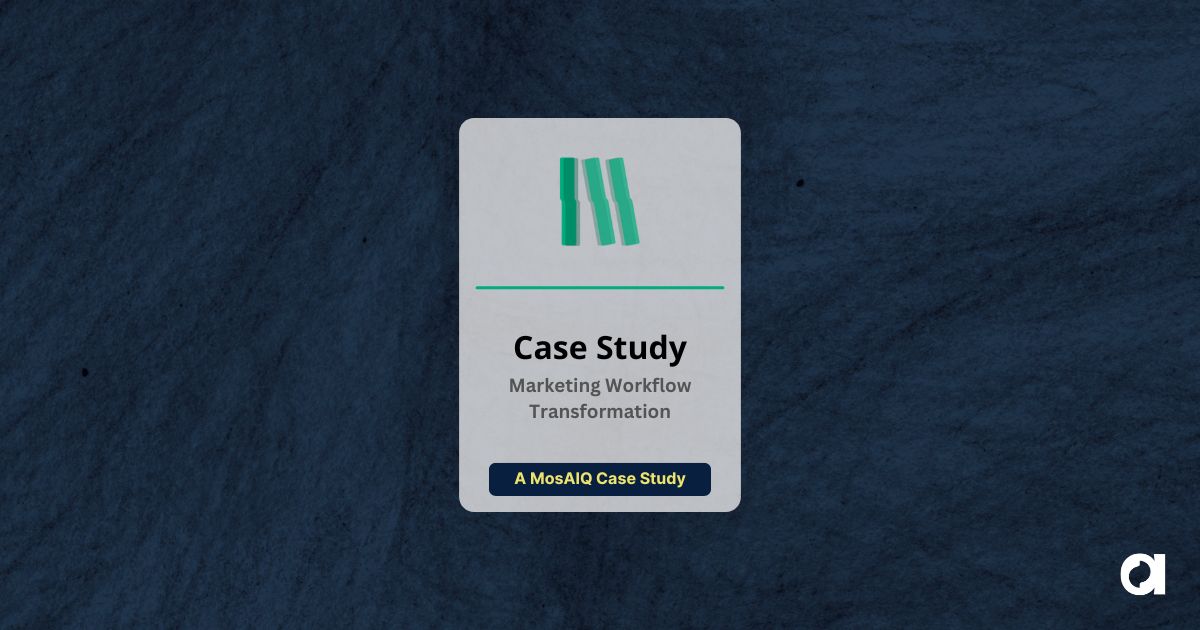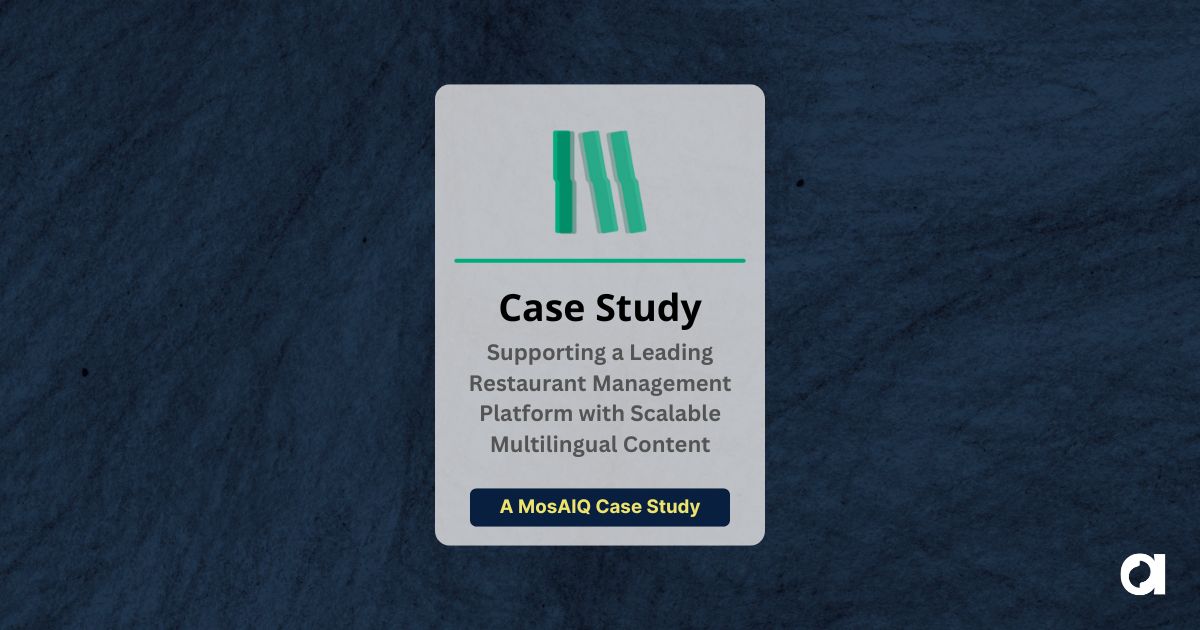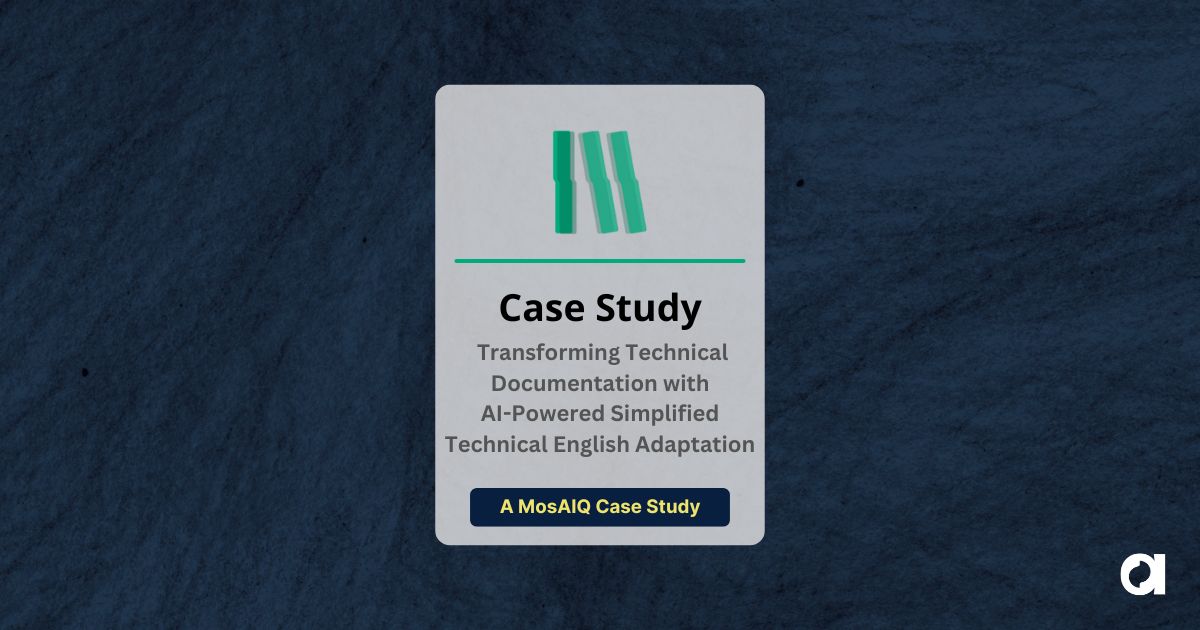Join Stephanie Harris-Yee and Erik Vogt for a thought-provoking discussion on how artificial intelligence is transforming marketing beyond just accelerating content production. This conversation explores the shifting paradigm from content volume to precision targeting and the evolving role of localization in an AI-driven marketing landscape. Key topics covered:
- The changing bottleneck from production to audience attention
- AI-powered feedback loops and market listening tools
- The role of traditional localization in the age of AI content generation
- Strategies for brand consistency across global markets
- Optimizing content for discovery by both search engines and AI systems
More “Field Notes” Episodes
Explore more topics with Stephanie and Erik in our Field Notes series, where we break down complex localization concepts into practical insights for industry professionals. Check out our other discussions on translation technology, localization strategy, and industry best practices.
Stephanie Harris-Yee: Hello, I’m here again with Erik, and we’ve had a number of chats now about AI in localization specifically, but let’s go a little bit broader today.
So let’s go into AI in marketing. Now everyone knows that AI can accelerate content production process. But Erik, how does that really fit into the global sphere?
Erik Vogt: Sure. You’re absolutely right. The AI dramatically accelerates the generation of copy. And because the models are trained on quite a lot of marketing and sort of superficial content it’s really good at that. And it can generate this in a lot of different ways. Argos has content generation models that can automatically choose tone and intent and the length of the piece, and it can organize its thoughts extremely well. And then out pops 500,000 or 1500 words that are well structured, oriented towards a target market within seconds. So now you have an incredibly powerful method of generating copy for a variety of traditional targets. so what hasn’t changed is attention, human attention has not scaled. So that means that the value of the copy or the value of the collateral you’re creating becomes even more important. How does it differentiate itself from a standard AI output? How do you make something that really resonates with a very target market? So I think the bottleneck has switched from not being production anymore, but now it’s attention and fine tuning. I guess a winning strategy in this case might be precision rather than volume. In this case, at least in terms of when you are trying to reach human eyeballs, which is something we’ll get to later.
Stephanie Harris-Yee: Cool. So with this, with content generation going from scratch, brand new stuff, is this something where traditional localization going to be cut out of the picture? Or how do you see that progressing?
Erik Vogt: I don’t think that it will be cut outta the picture. I think traditional localization is still gonna be important. The reason for that is control. And think about what’s happening here is let’s ask a question like why translate if you can originate? Why can’t what if you can generate content in that target language that’s appropriate for that market right out of the box.
And there you can use different tone, different target audience, different intent. You can spin it from a positive to a negative piece or vice versa. These things, you can either modify a copy or generate brand new copy relatively quickly in those target markets. So now the challenge. The risks, new risks are you’re introducing are cultural misfires.
You’ve misaligned. There might be something fundamentally different about that approach against your corporate brand guidelines. So controlling this process becomes so important. So native review, essential. Brand alignment, essential governance is really essential. So even though you are localization is shaped different, it’s not a direct one-to-one translation from English to source. It’s now a conceptual alignment and more about the style guide compliance and about the. Intent for that target market. Super interesting. Kind of new phase to this process, but also, I think we talked about this earlier, the idea of a different way of thinking about the architecture of the assets that go into the output of these things. Where product guides and knowledge graphs… and TMs, which are an important part of that glossaries and a different shape of a style guide all become part of the assets that a foundation model can then take that to generate accurate and useful information efficiently. So that’s a different way of thinking about it, but translation doesn’t go away. I think there’s still gonna be a role for translation in particular when you want your message to be consistent throughout that journey. Think about help content, like there’s no reason why support ticket support knowledge base articles should be fundamentally different in target languages. But for marketing, you have this great opportunity to serve really custom. Configure your outreach to your target markets. But the caveat is now you’ve got to think about localization from a different standpoint. You’ve got all this output. How do you know that it’s what you are trying to do effectively?
Stephanie Harris-Yee: Yeah. So you’ve created this output, like you said. How do you know if it works or not?
Erik Vogt: Yeah, there’s actually two ways of thinking about this. One is the hard feedback loops that you build into your release process that’d be in-country reviewers or your vendors who might be providing in-country experts who can look at this stuff, who are familiar with your brand guidelines and can review this stuff prior to output. But. Now there’s all this new things that AI can do too, such as listening to your market. And this is more of a B2C kind of dimension, you have sentiment analysis, trend detection, search and social listening dynamic and creative. You can… The creative optimization that can happen that reacts to these signals.
So now you have, let’s say you have a social listening channel open via some platform. You start seeing that your particular target audience is trending on a particular piece of news or something interesting in that you can pick up that signal really quick and you can look at how that may resonate with your target messaging. And flip that around with generating, let’s say, 15 or 16 different social media candidates that might act with right tone. Maybe it’s a little snark, maybe it’s a little bit of playful. To something fast and quick. And then that gets out there in the market much faster to react to that.
There was a famous case where there was a blackout at a large football event in the United States and one of the social media guys was so quick to the draw on this that they made they picked up on that trend and attached some witty reaction to that particular blackout, which was a famous everybody was talking about it, right?
So you’re just hooking your brand onto that wagon, trending wagon and being able to amplify your signal that way. But anyway, that’s probably not appropriate for most of our industry, which is trying to control your brand a little bit more. But the social listening and that feedback cycle of knowing how is your audience reacting to this?
What are they resonating from? There’s some fantastic platforms, of course. Thinking HubSpot here as one of many great examples, but they have a great way of allowing their users to get signals from the engagement on their content. So you can see what people are reading, what are they sharing, what are they viewing, how long are they viewing it, like all this type of intel becomes part of that signal.
But I think AI has now an even deeper reach where you can set up capabilities to even look deeper into the signals off platform. To get trend information that you obviously need to verify it and make sure that it’s consistent with what you’re trying to do. But now you’re looking at those signals that are now AI enhanced signals and then targeting your response to ’em appropriately.
Again, with generation that you, can create content very quickly now. So now you can imagine this really fast feedback loop where, oh, I see a signal here. I’m gonna generate this content here. And you’ve got people plugged right into this this feedback loop and get that stuff out like almost instantaneously. That’s an exaggeration. Instantaneously is bad idea. I don’t think we’re quite there yet, but at least you can speed it around and turn it into days or possibly hours rather than days or possibly weeks as some content has taken in the past.
Stephanie Harris-Yee: So we see that in the past marketers, they’ve always done SEO optimization, things like that, to make sure their content gets found by Google. Now we have all these other AI players in the space. So do you have any thoughts, ideas around how you can get AI to pick up your content and then also just even reference you, your company in a positive and correct manner?
Erik Vogt: Yeah, I think this is a very valuable question because the, whoever controls that channel is going to make a lot of money, right? So if you can create your content in a way that a large… and we see this already, that say like search engines will have a search informed response and that’s where the sponsorships come in.
So you can buy, essentially access to eyeballs for a particular topic. So it’s a little bit like search terms, but more on a deeper conceptual level. That’s now thinking about the natural user interface between the search window and the response. But many people are using LMS outside of that channel.
So how do you get to those people? Like SEO, you want to essentially give the model instead of, we have all this copyright lawsuits about you wanna do the opposite of that. Instead of controlling your copy, you wanna make it as easily accessible as possible to make it more likely that the model will see this as relevant and useful content.
It should be well structured, it should be relevant. I think the SEO concepts are still very applicable because I think the same things that signal a copy as being valid will resonate with the, how the model assesses the fit of that copy to the intent of somebody making a query on the other end. So it’s an interesting sort of mindset. But I think when I’m doing this kind of research myself, I’m finding that it’s generally finding things. Wikipedia needs to be accurate. Like it’s gonna… it’s obviously… the ones that I use, it seems to always check there first, or at least has some foot in the door there. Other kind of free channels such as LinkedIn. Not via a personal profile, but something more public. Make sure that intelligent, thoughtful copy is accessible by the LLMs in large platforms like LinkedIn. And then there’s the website itself and like how and that’s the same rules apply.
I think if it’s available and it’s got good copy, good information, it’s detailed and that the LLMs are more likely to pick it up. Now I have started. I don’t think anybody’s got the magic formula for this. And I imagine this is gonna be a big topic in the next few years as people figure out ways of hacking.
How do you optimize, how do you get that signal out there? And again, getting back to point number one, audience attention is finite. So we’re trying to use all this hyper power to get even more opportunity to get access. We might see some surprising flips where people shift back over to human relationship channeling.
It’s like I see a lot more like outreach of person to person outreach of like real humans making contact again to try to get past the perception of just being part of an algorithm of having things fed to you that are low relevance. So anyway, all these things are really interesting to watch.
As AI has, it’s hitting it’s hitting all of these things at the same time. And so marketers who are challenged with this I’d say speaking to the marketers out there, like you, I think we’re gonna be thinking about using the signals we can to use it to learn more, to get insights, to look at what are the patterns out there?
Use those analytic tools to their maximum extent. Still need to generate plenty of copy just to stay in the game. Like that doesn’t go away. But I also think targeted outreach and targeted distribution of high value content becomes the most important. So it, it’s all about signal. It’s all about. Personalization and how do you make sure that your message is not is getting to the people who can resonate with it? How do you know that they’re the ones who will resonate with it?
Those rules still apply even in the role of AI. In fact, maybe if more, I would say getting, going back to the basics and thinking about the value that each of these tools provides might be the most important thing that everybody needs to do at this stage.
Stephanie Harris-Yee: For sure. Okay, so let’s close it out. Any final things that we can take away, take home with this that are actionable? Things to either think about or do
Erik Vogt: We always need to ask ourselves if we’re solving the right problems. Are we just doing the same thing faster? Getting back to that horse problem that Henry Ford supposedly said. Are we trying to make a faster horse? We think content good, make more content all good or is it maybe that you need to slow down and think about, let’s make some copy that is really good that people will want to share and distribute because it’s that good and attach your brand to that solid content. I think the automation is needing to be smarter and automation is absolutely great. But I think maybe the weight of summarizing all this stuff from my perspective is actually empathy. Better empathy powered by all these tools, but at the heart of it is empathy. And empathy comes from knowledge, empathy comes from like all these other signals that you’re getting to really get to the experience of your target customer. And maybe not about idea to go back to the customer experience journey and make sure that you’re thinking about where in that journey people are engaging with your brand and make sure that you’re getting the basics right, ’cause it’s so easy to hyper optimize bad signals. Joseph Campbell once said to air is human, but to really screw things up, you need a computer.
And that was 60 years ago. The same thing, like you can colossally blow it with high volume garbage that generally just creates noise rather than just crystalline signal that you’re trying to get. That really hones in on your value proposition. That would be my belief of the winners of the future in this race are gonna be resonating with these signals.
Stephanie Harris-Yee: Thank you so much, Erik.
Erik Vogt: Always a pleasure, Steph.
 Argos Multilingual
7 min. read
Argos Multilingual
7 min. read
Most companies already have a localization workflow. It might have been built during an early expansion push, or inherited from a vendor. In some cases, it came with the implementation of a translation management system, or TMS, sometimes without much training or customization. Whatever its origin, the workflow is probably still in place and still […]

 Argos Multilingual
6 min. read
Argos Multilingual
6 min. read
AI remains a hot topic in localization right now. It shows up in conference panels and RFPs and there’s a lot of curiosity, urgency, and noise. But what’s still rare are examples of where AI is working well in practice. This creates some risks. It’s easy to talk about potential and efficiency gains in theory, […]











